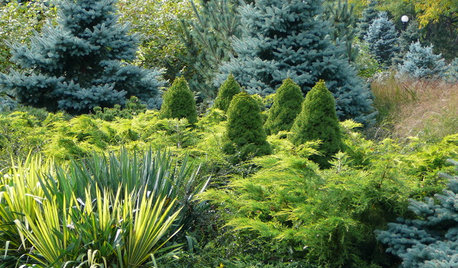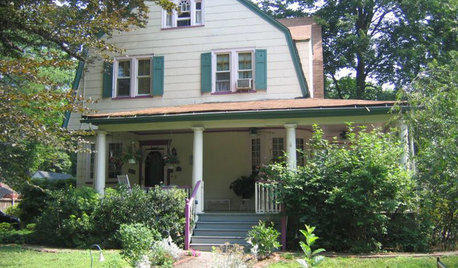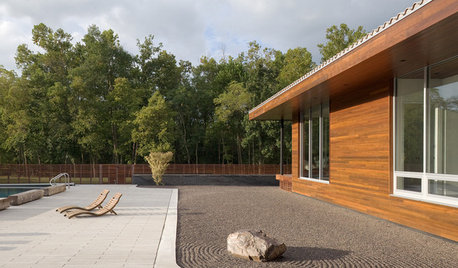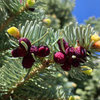Chamaecyparis obtusa 'Rashamiba'
ademink
16 years ago
Related Stories

PLANTING IDEASDesigning With Conifers: Layers of Texture for Your Garden
Sharp and prickly or fine like ferns, richly textured conifers bring unexpected interest to the landscape
Full Story
PLANTING IDEASStretch the Budget, Seasons and Style: Add Conifers to Your Containers
Small, low-maintenance conifers are a boon for mixed containers — and you can transplant them to your garden when they’ve outgrown the pot
Full Story
EXTERIORS13 Dramatic Exterior Paint Makeovers by Houzzers
See real-life before and afters of home fronts transformed with paint, in wide-ranging colors and styles
Full Story
LANDSCAPE DESIGNMake Your Garden Come Alive With a Sense of Movement
Master the illusion of motion for an exceptional garden that stirs emotions and the imagination
Full Story
GARDENING GUIDESHave Acidic Soil in Your Yard? Learn to Love Gardening Anyway
Look to acid-loving plants, like conifers and rhododendrons, to help your low-pH garden thrive
Full StoryMore Discussions










tsugajunkie z5 SE WI ♱
ademinkOriginal Author
Related Professionals
Harrison Landscape Architects & Landscape Designers · Manorville Landscape Architects & Landscape Designers · River Forest Landscape Architects & Landscape Designers · Bridgeport Landscape Contractors · Cornelius Landscape Contractors · Fort Payne Landscape Contractors · Lynchburg Landscape Contractors · Norristown Landscape Contractors · Northbridge Landscape Contractors · Ramsey Landscape Contractors · Ringwood Landscape Contractors · San Bruno Landscape Contractors · San Carlos Park Landscape Contractors · Northlake Landscape Contractors · Crowley Landscape Contractorspineresin
conifers
Embothrium
botanybabe